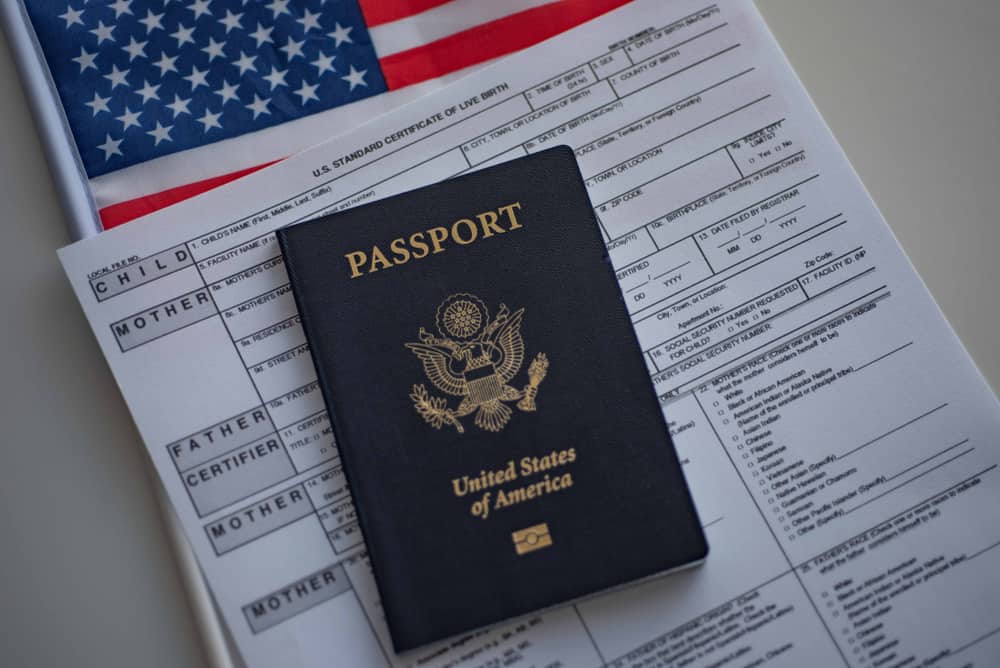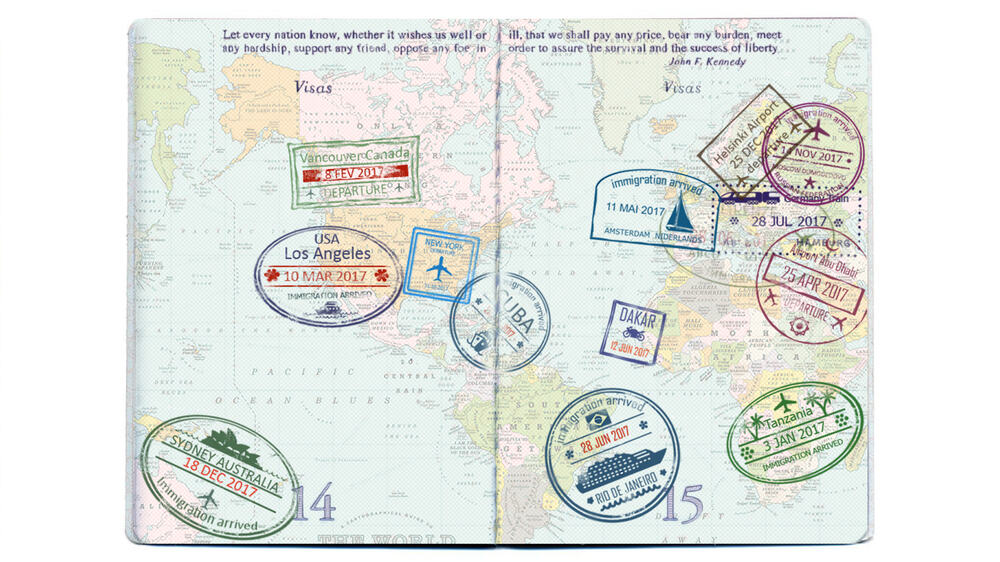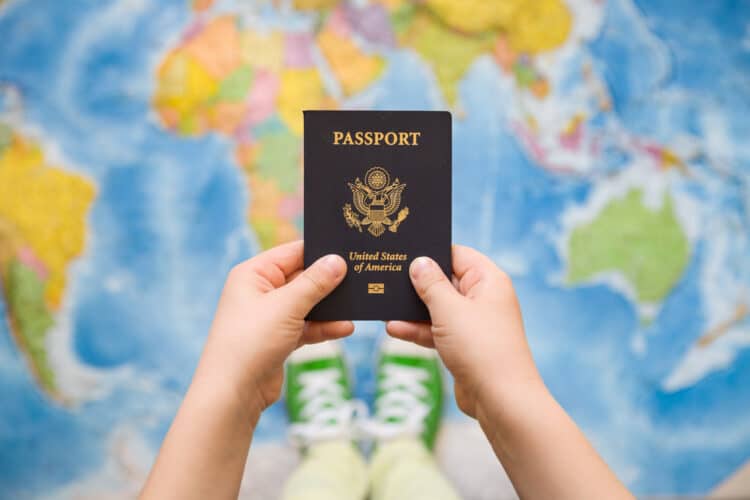It’s funny how you don’t need permission from your absent ex to apply to a private daycare, pay tuition, sign up for baseball, enroll in summer camp and take care of your child’s daily needs. Want to take a vacation, though? If it requires a passport, get ready to ask that uninvolved parent for their seal of approval.
Who says you need your ex’s permission to travel abroad? And why?
According to the U.S. Department of State, minors under the age of 16 require both parents to sign off on a passport application – preferably in person.
The intentions behind the regulation are good: according to the Office of Juvenile Justice and Delinquency Prevention, there were more than 337,000 reports of missing children in 2021. According to Child Find of America, 78 percent of abductors are the non-custodial parent. The law requires both parents’ consent to prevent international parent abduction. The State Department even has a special passport issuance alert program for parents who are worried about parental abduction.
So, on that level, it makes perfect sense that both parents should need to grant permission for international travel. And this is not a problem for two uncoupled parents who communicate regularly or have a court order granting sole legal custody of your child, but what if that’s not your situation?
What if you can’t contact your ex?
While the State Department would prefer two parents to show up in person to apply for a child’s passport, even the government realizes this may not be possible. Options around that scenario include:
- You can prove sole legal custody.
- Your child’s legal birth certificate only lists you as a sole parent.
- You have a specific court order allowing you to apply solo for a passport.
- The court recognizes the other parent as incompetent.
- Your ex is deceased.
In these cases, the court recognizes you as the sole parent in charge of decision-making, and you will be authorized to fill out your child’s application for a U.S. passport without further ado. But what if none of those things apply, and you don’t want to ask your ex for permission?
In my case, for instance, I was not married to my ex. While non-dad is named on the birth certificate, he has been completely uninvolved in my child’s life. We co-parented (terribly) for about 10 months and then threw in the towel. I’ve had sole custody – and sole responsibility – for nearly 13 years.
My son has a burning interest in geography and travel. And I’ve saved up a little vacation fund to be able to explore a little. Imagine my surprise when I learned I needed to reach out to my ex to ask for permission.
To ask “parental” consent from an ex for any decision at all just irks me – and makes me afraid of what might be asked for – or demanded – in return. You will immediately understand why if you have been in an emotionally abusive relationship. So, I researched my options, and I’m sharing them with you.

Get your ex’s consent in writing
If you are able to contact the non-custodial parent by mail or email, you can get them to fill out Form DS-3053 to give their consent. Your ex must be willing to do this and be reliable enough to take the form to a notary to witness their signature.
If you want the least personal contact, you can send the form via an electronic document service, such as DocuSign. Or consider sending by certified mail to keep a documented paper trail of your attempts at contact. (You may need this later.) On a good day, maybe you’ll get that signed form back in a timely fashion, and you can continue on with your plans. And if that’s not the case, you have options.
What to do if you can’t locate the absent parent
The State Department seems to have a form for just about everything. If you are drowning in a sea of anxiety over needing your ex’s permission, think of Form DS-5523 as your potential life raft. The Statement of Exigent/Special Family Circumstances form is your way of communicating to the state that you cannot obtain consent.
This form isn’t for you if you can resolve your situation another way. This is truly for parents like me who don’t know how to contact their ex. In my case, I don’t know where my ex works and am not even sure where he lives. The last phone number and email I have are no longer functioning. I may be willing to dig deeper if my DS-5523 isn’t approved, but I’m trying this route first.
If you use this form, be prepared to offer a record of how many times you have attempted to contact the absent parent. The government would even like you to try to reach them via a friend or two (no kidding).
You then have the opportunity to explain why you haven’t been able to reach the other parent and present your case for why you qualify for exemption via special family circumstances.
This form does not need to be notarized, but you will sign it “under penalty of perjury” and submit it with your child’s passport application. Completing the form doesn’t guarantee that your application will be accepted.
What if it’s an emergency?
If you need to get your child out of the country for health or welfare reasons and don’t have time to wrangle the consent statement, you’ll use Form DS-5523 to report this exigent circumstance.
Your best shot at getting your child’s passport
If you can contact your ex and obtain the signed and notarized statement of consent, you won’t have to wonder if your application will be approved. You don’t necessarily need to contact them yourself. If you have mutual friends, are in contact with their family or have a lawyer who can present the form for completion on your behalf, take whatever route works best for you.
Don’t wait too long to apply for a passport
Travel.gov reports that the typical processing time for passports is 10 to 13 weeks. A recent report by NPR noted that demand is way up, with the State Department expecting to issue more than 22 million passports in 2023.
Post-COVID travel is a thing. If you plan to travel out of the U.S., you’ll need to get a running start, especially if you need to track down an elusive or reluctant ex.

Canada may be an option
Our Plan B is Canada. According to U.S. Customs and Border Protection, children under 16 just need proof of U.S. citizenship to cross into Canada. While a parent needs a valid U.S. passport, passport card or NEXUS card, a legal birth certificate will do for a child. To be absolutely safe and avoid travel issues, it is recommended that the traveling parent carry a consent letter from the other parent.
What happened with my application
I started my process with the truth: I can’t locate this person in the regular course of life. I submitted my application filled with detailed information about why this person may be on the birth certificate but has abandoned any and all responsibilities of parenting.
About 12 weeks and $150 later, my application for an exception was denied. The reasoning:
- My ex’s name is on the birth certificate.
- He is not dead or incarcerated.
- I didn’t provide a communication log detailing how I’ve tried to contact him directly or through family or mutual friends.
I needed to think about my next step. Like many of us, a certain amount of fear goes into contacting someone you haven’t spoken to in 12 years — especially when that contact has the potential to make your life messy.
In my case, I decided that I wouldn’t let anyone else hinder my actions or decisions as a parent when it comes to the well-being of my child. So, I returned to the post office with a letter to my ex, requesting that he sign the form.
Tips for writing a letter requesting your ex’s signature
I love to write out my feelings. Like, scream it all onto the page to clear my head. This letter, however, is not the place for that. This letter is emotionless. All business in format and content. More tips follow below:
- Don’t explain yourself. It’s none of your ex’s business why you want the passport. You just want the passport. What you are asking for is a signature. You may explain that the signature is required because their name appears on the birth certificate, and they are potentially reachable by mail. In my case, the fee had already been paid, so I clarified that point, too.
- Write as if you are requesting for an intern to complete a task for you. Not a friendly colleague, not someone you have a history with, just someone who is going to do one thing and may need a few detailed steps to carry out the task.
- Spell out each step in a bulleted list. They will need to sign the enclosed form in the presence of a notary and enclose a copy of their identification along with that form in the pre-addressed, stamped envelope you have included. Don’t ask your ex to send the information back to you.
- Pre-address the envelope to the appropriate passport office and stamp it. Make it easy for them to send it right where it needs to go.
- Give a clear deadline. Set a date by which the task needs to be completed and proof shared with you (via email or mail) that it has been done.
- Fill out the form. That way, the ex can’t fill it in wrong. They just sign.
- Sent it by certified mail. Bring everything to the post office and request to send it by certified mail. Ensure you know the specific U.S. Department of State office address you need. In my case, I had a return address from the rejection letter I was sent.
As for the return address you’ll use, that is up to you. You’ll need one so the USPS can send your certified mail receipt back to you. Some people may be uncomfortable including their home address and want to use a friend or family member’s address. The postal service agent told me that is perfectly acceptable. Let your friend or family know that a small postcard-like stub will come their way once the letter is signed for. If your ex doesn’t come through, you hold onto that stub and use it to prove you’ve attempted contact.
Your process may be different, depending how you start
Because I was so sure I’d get approved the first time around, I had to request my ex’s signature after applying for the passport, which dictated my process. If you are requesting the signed DS-3053 in advance of submitting your application, some of these steps change. For instance, you’ll want your ex to sign that form and return it directly to you so you can mail the application along with that form. For obvious reasons, I would not advise sending the form and entire application to your ex and trusting them to submit the whole tidy package to the State Department. If they were that capable and dependable, you wouldn’t be reading this article.
Once the proper office receives that signature, the passport application can continue traveling through all the red tape until it finally reaches your hands. The good news is you’ll have plenty of time to plan that trip!






